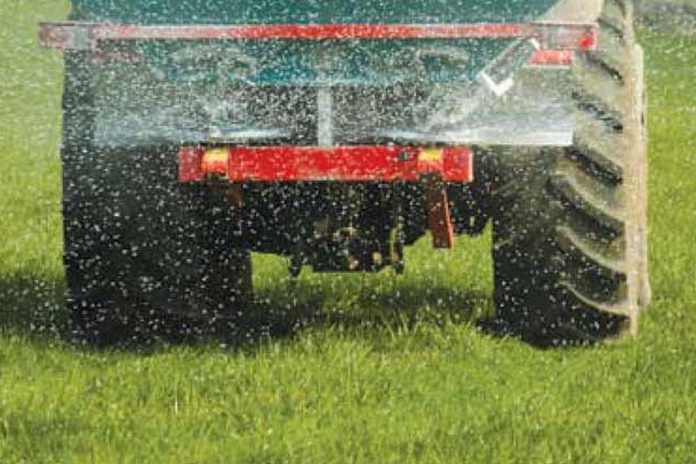Pamela Gardiner discusses using Information Technology to make efficient use of chemical fertiliser.
Fertiliser prices are at a historic high. The pressure to reduce the negative impact farming has on the environment is at the core of agricultural production.
How can you ensure you use the correct amount of fertiliser for your grass crop this year?
-
Determine crop requirement
Soil testing:
- Helps you establish soil health;
- Allows you to achieve an optimal pH;
- Determine if P, K or S is required in addition to nitrogen.
CAFRE’s online crop nutrient calculator helps you to work out your crop requirements.
-
Setup equipment correctly and measure the flow rate
Your fertiliser spreader has the job of distributing fertiliser evenly across its bout width in a controllable and measured manner.
It should therefore be stable, level both left to right and front to back as well as operating at the correct height above the crop.
Check these settings before application and adjust if necessary. Calibrating your spreader by measuring the weight of fertiliser dispensed over a set time is a useful exercise for you to complete at least once per year.
-
Know your bout width and drive accurately
To ensure accurate distribution of fertiliser at the rate required, you must be able to drive to the correct bout widths at the correct speed.
Ground speed will be displayed on the tractor’s dashboard. Alternatively, you can calculate it based on your tractor’s gearing and engine speed.
Online calculators can calculate the required flow rate for most common speeds and bout widths.
Driving accurate bout widths can be challenging, especially when grass cover is low. GPS-based technologies make this process easier and reduce potential wasteful overlapping or gapping.
The simplest and cheapest GPS based system can provide you with a visual guide on a lightbar or mobile app to guide you along a programmed line running parallel to your previous pass.
These systems are quick to set up and operate and can be moved between tractors easily. They provide the operator with sufficient positional information to distribute fertiliser accurately in the field.
For operators requiring additional assistance with bout widths, self-steering systems will use GPS information to ensure the tractor remains on the correct trajectory with little or no input from the operator.
These systems require significantly more investment and are more suited to applications such as cultivation, where you require accurate location information to establish and treat crops.
-
Targeted applications
Variations across every field means not all parts of the field need the same application of fertiliser to ensure optimum crop production.
As a result of averaging the rate across the field, you are oversupplying some areas, which can have both financial and environmental implications, as well as undersupplying other areas which would benefit from additional nutrients.
An integrated approach, that measures the crop variability within a field and links this information to subsequent nutrient applications will result in the most efficient method to produce grass on-farm.
High levels of investment are required for this technology, and it may be uneconomical for most farmers in NI.
Consider if a contractor can offer services, such as yield/quality mapping at silage harvest. Use this information to help determine future crop requirements.
Remote sensing technologies (drones with multispectral sensors) can measure vegetative indices during the growing season.
This data can build up an accurate measurement of plant health. You can use it to create field zonation information. This will help determine the appropriate fertiliser application rates needed across the field.
Variable-rate fertiliser equipment can deliver a targeted application based on yield mapping or crop health analysis, thus avoiding over or undersupply.
Measure to manage
Increasing costs and pressure to reduce inputs will continue to be part of farming in NI.
Understanding your crop requirements and being able to meet them both across and within a field will allow you to apply nutrients where needed.
Improve cost efficiencies and reduce environmental impact by:
- Firstly, measuring soil health;
- Measuring equipment accuracy;
- Measuring crop production;
- Lastly, managing the needs of your crop.
Other articles:





